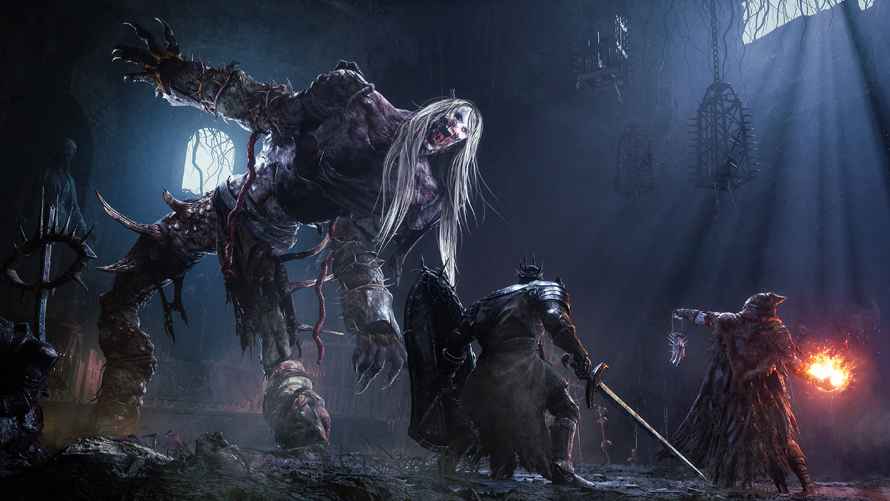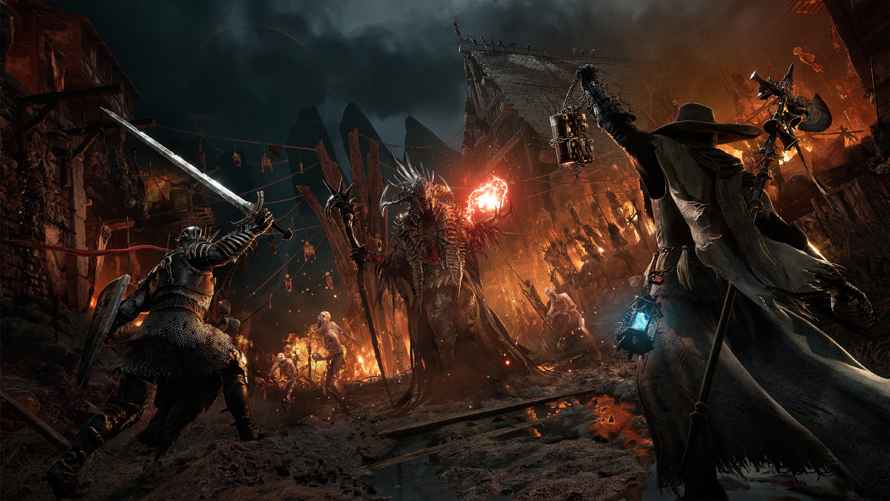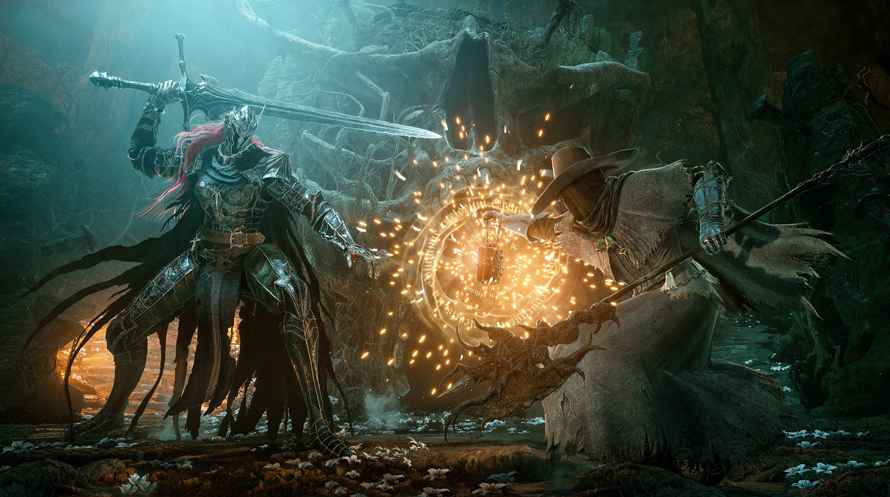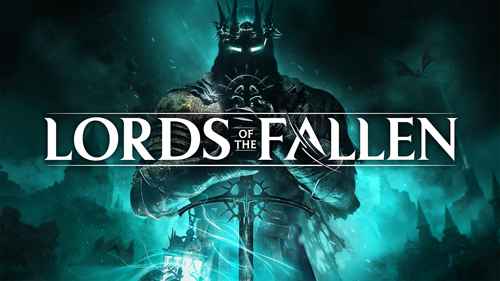Lords of the Fallen Review
Here’s a question: is it better to stretch and stumble, or play it safe and succeed? I’m a strong proponent of the former, but I can appreciate taking the well-worn path as well. I thought about this choice as I played — and sometimes struggled —through Lords of the Fallen. While much of it sticks pretty closely to the Soulslike formula, it diverges in some significant ways. Those innovations will help Lords of the Fallen distinguish itself in a crowded genre. If, that is, some of the game’s flaws and issues don’t sour the experience for players before they can be addressed.
Reboot, Remake, Reimagined
The original Lords of the Fallen was released in 2014 and was one of the first Dark Souls copycats. It was criticized at launch for some pretty horrendous technical issues, and for sticking too closely to the FromSoftware design template. In time, the bugs got fixed, there were graphical updates and the game even found an appreciative fan base. Ironically, sticking to the Soulsborne formula has become the norm over the past ten years. It has become a feature, not a bug.
Aside from the title and a shared dark fantasy setting that propels the timeline a thousand years forward, the new Lords of the Fallen has no practical relation to the original. It’s essentially a reboot. It’s also, of course, a Soulslike. This, as most gamers know by now, is shorthand for a specific genre of action RPGs. Some of the most common characteristics include emphasis on challenging, risk vs reward combat, reliance on light and heavy attacks, skillful use of dodges, rolling, blocking, and perfectly timed parries. Add healing checkpoints, and some basic upgradable stats and you have most of the fundamental ingredients. But if it was simply a matter of assembling the parts, every game in the genre would be great. Alas, they’re not.
No Identity Crisis Here
Lords of the Fallen does a very good job of following the template. There are a staggering number of weapons, armor sets, pyromancies, and other magics, consumables, and throwables. It’s hard to imagine anyone getting bored or unable to find gear that matches their playstyle and class. And fashion sense.
The starting classes follow the Dark Souls playbook of being just that, constructions to get the player through the early hours of the game. There are the standards — tanky warriors, glass cannon mages, healers, and holy fighters — but the most viable all-arounder is locked behind a paywall to start. The Dark Crusader is a paladin with strength, high hit points, and offensive holy magic. But the class is only available to purchasers of the game’s special edition at a premium price. That’s a bummer.
All that’s to be expected in a standard fantasy RPG. Where Lords of the Fallen diverges from tradition is splitting its world in two. There’s the everyday world of Axiom, a kingdom filled with imposing castles and cathedrals, rickety mountainside slums, dark forests, and dangerous swamps. But underneath Axiom is an interdimensional, death, and dark magic-filled plane of reality called Umbral.

A Walk on the Dark Side
Moving back and forth between the realities of Axiom and Umbral allows the player to find hidden paths, solve puzzles, and fight monsters that only exist in the dark world. And while it’s tempting to stay and fight in Umbral, there’s a cost. The longer one remains, the more enemies appear and the more powerful they are. Dying in Axiom means an automatic resurrection in Umbral. It’s a second chance to finish a fight. But it also means a frantic, terrifying scramble to find an exit point before dying and losing everything.
From a design standpoint, it’s an incredibly complex and audacious mechanic. It rarely feels like a gimmick in search of a grander purpose, and it adds a great strategic layer to exploration and combat. Going voluntarily into Umbral never feels like a decision to take lightly. Dying in Axiom and rising again in Umbral was always a mixture of relief and terror.
Finally, the level design in Lords of the Fallen is intricate, interesting, and masterful. It’s easy to get lost in the best, FromSoftware way. Exploration is always rewarding.
Not All Good News
I’ve described a rather appealing and successful RPG that manages to innovate while remaining firmly in the Soulslike traditions. And that’s all true. Unfortunately, Lords of the Fallen has some issues. Almost all of them are fixable.
The original Lords of the Fallen debuted with serious technical problems. It’s surprising, then, that developer Hexworks wasn’t meticulous in making sure the new game was as pristine as possible. Instead, the PC prerelease version has been plagued by crashes, bugs, and a lack of optimization. The PS5 version was sent to reviewers with a bug that wiped save games and an issue with game audio. Frame rate drops were common in my playthrough on PS5. Your experience may vary, but on PC, low-end or middling rigs are going to strain. The devs have released a steady stream of patches, though. Maybe by launch day things will have been cleaned up.
Off Kilter Killers
Recently, the otherwise excellent Lies of P struggled with balancing enemies. Elites and bosses’ difficulty were out of proportion to normal enemies. Lords of the Fallen has the opposite problem. The sheer quantity of aggressive, low-level enemies sometimes makes exploration a slog. On the other hand, the game’s imaginative bosses are mostly tough but fair, given practice, skill, and appropriate gear. Mini-bosses are uniformly right in the middle.
To wrap up the game’s negatives, while there is a huge amount of variety to combat and enemies, there’s a fair bit of jank and clunkiness too. Running has an unrealistic, almost comical animation, and rolls are ridiculously long. On the other hand, jumps are anemic. All these problems come together in the game’s second area, a sprawling mountainside complex of temples, caves, and scaffolding. Dying to gravity while miscalculating a roll or jump is at least as common as being killed by an enemy. Players adverse to platforming will never stop cringing.

Fair or not, we’ve all been spoiled by Elden Ring and Dark Souls’ graceful movement and refined animations. Lords of the Fallen’s systems, movement, and controls will take even Souls veterans some hours to get comfortable with. But eventually, it will come.
If Looks Could Kill
Distracting — in a much more positive way — are Lords of the Fallen’s Unreal Engine 5-powered visuals. Thanks not just to technical wizardry but to meticulous and creative art design, the game looks spectacular. Architecture, lighting, and enemies are of a piece in each of the game’s varied zones. Some of the detail and sharpness gets lost in compressed YouTube videos. You have to see it for yourself. The magic and spell effects might just be the best in the genre.
Sound design is not quite as consistent, starting with the dozens of voiced NPCs. There are several standout performances but a few seem seriously miscast or at least not up to the task. Overall, many of the combat and magic effects are punchy and unique. Others lack presence. The environmental audio could use more attention paid to spatial separation and enemies’ location in the world. The always reliable Chris Velasco co-composed the score, which ranges from typical action bombast to more intimate moments using exotic colors. For some reason, though, I was never compelled to pay much attention to the music.
Pass or Play?
Bottom line, how does Lords of the Fallen fit into the crowded field of Soulslikes, all hoping to divert your attention away from another run through Elden Ring? Compared to the recent Lies of P, Lords of the Fallen is big, operatic, and incredibly ambitious. But it’s sloppy, too, and not as meticulously refined or as polished as Lies of P. They’re both easy to recommend to fans of the genre, but Lies of P might be a bit more friendly to newcomers.

It should be noted that the game’s multiplayer aspects were not previewed in the review process. It’s an important unknown how both cooperative and PvP play will impact the difficulty of combat and exploration, or for that matter, if everything even works as intended.
With incredible art design, challenging action, and a very innovative, dual-world mechanic, Lords of the Fallen is probably a must-play for fans of Soulslikes. But it’s hard to ignore the game’s issues, too, from sometimes unrefined movement and clunky combat to its many technical hiccups. While these can be frustrating or worse, ultimately the game’s ambition and dark fantasy vision are at least as compelling as its flaws.
***PS5 code provided by the publisher for review***
The Good
- Outstanding art direction
- Intricate level design
- Creative dual world mechanic
- Challenging exploration and combat
- Lots of build variety
The Bad
- Clunky movement and combat
- Inconsistent challenge
- Lots of bugs
- Spotty voice acting
- Pay to win Dark Crusader class

